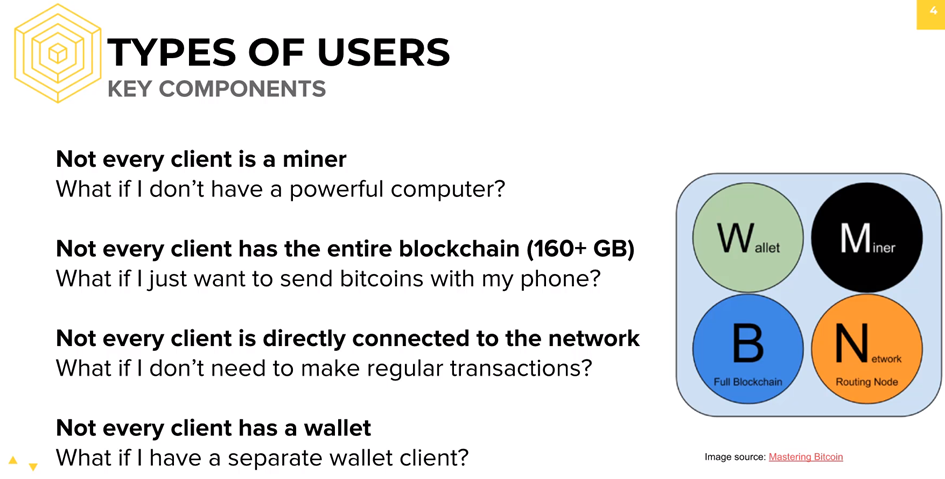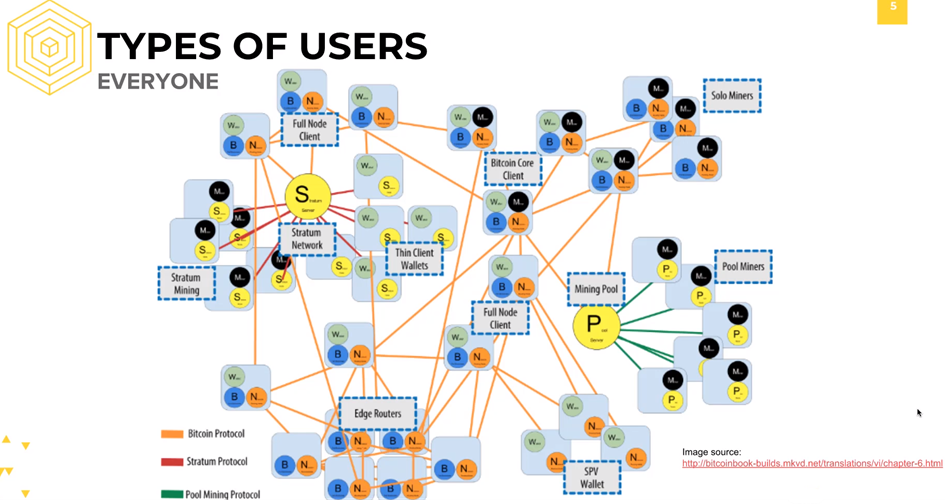
In our previous discussions about Bitcoin mechanics, we explained everything from the perspective of a full node and miner: a user with networking capability to interface with the Bitcoin network, actively maintains a full up-to-date copy of the Bitcoin blockchain, has a wallet as a means to manage public and private keys, and mines to support the network and also to earn a mining reward.
There’s a total of four functions: network routing, mining, maintaining a full blockchain, and handling wallet services, and our full node miner contains all of them. But normal clients don’t need all this functionality.
For example, not every client is a miner. If my computer isn’t fast enough, I won’t be making a profit mining, so why bother?
Not every client needs to have the entire blockchain. If I just want to send bitcoin through my phone, why would I want to have the 160 plus gigabyte blockchain downloaded?
My phone doesn’t even have that much storage!
Not every client even needs a wallet, especially if they don’t transact often.
Say you’re just a full node hosting the entire blockchain, but have no interest trading yourself. Or you have a separate wallet software.
And finally, as we’ll soon see, not every client needs to be connected to the Bitcoin network, or even the internet!

In actuality, the distinction between different types of users isn’t just through these four main functionalities — mining, routing, having a full blockchain, and key management through wallets — but it does summarize a lot about the Bitcoin user experience.

